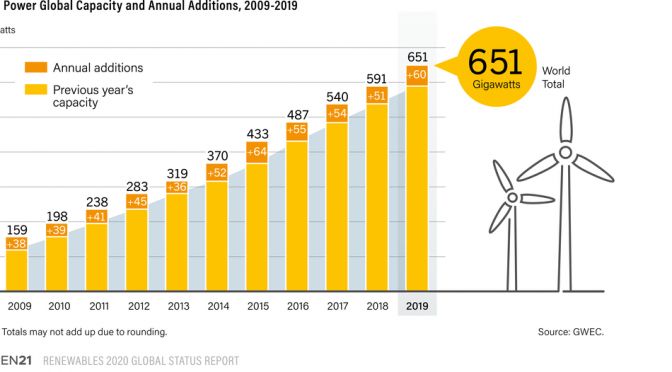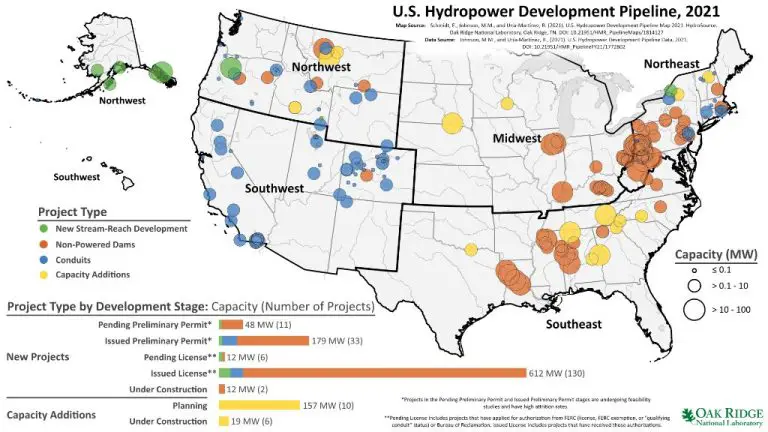What Form Of Renewable Energy Is Used Most To Generate Electricity?
Renewable energy comes from natural sources that are replenished at a faster rate than they are consumed, such as sunlight, wind, water, plants, and geothermal heat. Renewable energy is increasingly being used to generate electricity as countries shift away from fossil fuels to combat climate change. According to the International Energy Agency, electricity generation from renewables accounts for about 40% of the total renewable energy supply globally.
Hydropower
Hydropower is the most widely used renewable energy source for electricity generation globally. According to statistics from Statista, hydropower accounted for over 50% of renewable electricity generation worldwide as of 2021 (Statista). Some countries like Brazil generate over 80% of their electricity from hydropower. Other leading countries by share of electricity generated from hydropower include Canada, Norway, Venezuela and Russia. In the US, hydropower accounted for about 7% of total electricity generation and over 40% of renewable electricity generation as of 2021, according to EIA data (EIA). With abundant water resources, hydropower provides a stable, renewable source of electricity generation around the world.
Wind Power
Wind power is one of the fastest growing renewable energy sources in the world. According to the International Energy Agency (IEA), global wind power capacity increased by over 65% between 2014 and 2019, reaching over 650 GW by the end of 2019 (IEA). The IEA projects that if current trends continue, wind power capacity could reach around 1,400 GW by 2024.
A major driver of wind power growth has been the declining costs of wind energy technology. Between 2010 and 2020, the levelized cost of electricity from new wind farms fell by 44% on average worldwide, making wind cost competitive with fossil fuels in many markets (BloombergNEF). Technological improvements, larger turbines, and economies of scale have all contributed to the falling costs.

Offshore wind has grown rapidly and accounted for over 10% of new global wind installations in 2020. Offshore wind is expected to expand significantly, especially in Asia and Europe, as countries aim to take advantage of strong coastal winds and declining offshore wind costs (IEA). Overall, wind power is projected to supply up to 17% of global electricity by 2024.
Solar Power
Solar power is the fastest growing renewable energy source in the world, with global capacity increasing exponentially in recent years. According to Global Solar Panel Statistics, Facts, and Trends of 2024 by Greenmatch, global solar PV capacity increased from 405 GW in 2017 to 821 GW in 2021, representing over 100% growth. However, solar still trails behind hydropower and wind in terms of total electricity generation. In 2021, solar accounted for just 3% of global electricity production, while hydropower produced 16% and wind captured 8% (Deloitte).
The growth potential for solar remains high, especially with advancing technologies improving efficiency and lowering costs. Global investment in solar totaled $174 billion in 2021 and is projected to reach $1.5 trillion through 2030, accelerating capacity additions globally (Global X ETFs). While solar currently provides a small fraction of electricity, continued innovation and declining prices will enable exponential growth in the coming decades.
Bioenergy
Bioenergy refers to renewable energy derived from organic materials and is used to generate electricity through combustion of biomass fuels like wood, agricultural waste, and organic municipal waste. According to the International Energy Agency (IEA) report on bioenergy power generation, bioenergy electricity generation increased by 53 TWh in 2020, accounting for 8% of the total increase in global renewable electricity generation that year. The IEA projects bioenergy will need to grow at an annual rate of 7% through 2030 to stay on track for net zero emissions by 2050.
Some key statistics on bioenergy electricity generation worldwide according to Statista:
- In 2022, bioenergy accounted for 2.4% of total global electricity generation.
- The top countries for bioenergy capacity in 2022 were Germany, Brazil, Sweden, the United States, and India.
- From 2000 to 2020, global electricity generation from bioenergy increased from 262 TWh to 630 TWh.
Most bioenergy generation involves direct combustion of biomass to produce steam which spins turbines for power generation. Other methods like gasification and anaerobic digestion are also used. Sustainably sourced bioenergy can provide carbon neutral electricity generation while supporting waste management and rural development.
Geothermal
Geothermal energy harnesses heat from beneath the earth’s surface to generate electricity. This form of renewable energy relies on accessing reservoirs of hot water or steam located in the earth’s crust. Wells can be drilled into underground reservoirs to tap steam and hot water that can be brought to the surface for use in electricity production.
According to the Geothermal Energy Factsheet, geothermal power plants utilize steam or high temperature water from geothermal reservoirs to power turbine generators and produce electricity. With a capacity factor over 90%, geothermal can provide consistent baseload electricity supply.
The U.S. Energy Information Administration reports that in 2019, geothermal energy provided 0.4% of total U.S. utility-scale electricity generation. The western states of Nevada and California accounted for over half of geothermal electricity generation. Key benefits of geothermal include its high capacity factor, small land footprint, and low emissions.
Ocean Energy
Ocean energy refers to technologies that harness energy from the ocean’s waves, tides, currents, salinity gradients and thermal differences to generate electricity. While still an emerging sector, ocean energy has significant potential as a renewable energy source.
Some key ocean energy technologies include:
- Tidal power – Uses the rise and fall of tides to spin turbines and generate electricity. Projects are underway in Canada, France, and South Korea.[1]
- Wave power – Uses the kinetic energy from waves to power turbines or other devices. Pilot projects exist, but commercial viability has not yet been achieved.[2]
- Ocean thermal energy – Uses temperature differences between surface and deep ocean waters to generate electricity. Small plants have been tested but costs are still prohibitive.[3]
While ocean energy provided only 0.01% of U.S. electricity generation in 2019, costs are dropping as technology improves. With abundant potential off U.S. coastlines, ocean energy may play a bigger role in the renewable energy mix going forward.
Regional Differences
There are significant differences in renewable energy use by region across the world. This variation stems from factors like natural resource availability, government policy, economic development, and energy infrastructure. According to research, in Europe, renewable energy accounts for between 20-50% of final energy use in most regions. However, in the German state of Schleswig-Holstein, renewables comprise up to two-thirds of energy consumption. In Spain and Portugal, renewables satisfy one-third to over half of electricity demand. In the U.S., renewable capacity is highest in Western states like California where solar and geothermal sources are abundant. The Midwest leads in wind power generation, while the Southeast relies more on traditional biomass. Developing regions in Asia and Africa have lower overall renewable use but rapid growth in recent years. For example, India aims to promote regional renewable uptake through its Green Energy Corridors program [1]. Sub-Saharan nations are expanding small-scale solar to electrify rural communities. Overall, every world region has distinct renewable resources available, infrastructure in place, and policy approaches that shape their energy mix.
Future Outlook
The future growth of renewable energy is expected to be significant according to projections. Renewable energy capacity is predicted to expand globally by over 60% between 2019 and 2024, representing the largest increase in renewable energy capacity additions seen to date (IEA, 2019).
The share of renewables in electricity generation is forecast to reach 30% in 2024, up from 26% in 2019. Growth is expected to be driven by solar PV and wind power in particular. Total installed wind and solar PV capacity is set to more than double between 2019 and 2024 (IEA, 2019).
Many factors contribute to the positive outlook for renewables. Costs continue to fall, particularly for solar PV and wind power. Supportive government policies and targets drive growth in many countries. Electrification and decentralized energy access expansions also increase demand. If growth projections hold true, renewables will play an increasingly substantial role in electricity generation in the future.
Source: https://www.iea.org/reports/renewables-2019
Conclusion
Based on the information presented, hydropower is currently the most widely used form of renewable energy for electricity generation globally. However, other sources like wind, solar, and bioenergy are seeing rapid growth and starting to contribute more significantly in certain countries and regions.
.
Overall, renewables continue to gain market share for power generation as costs drop and countries aim to reduce carbon emissions. While hydropower leads for now, other sources like solar and wind are likely to gain ground in the coming years. The renewable energy mix will vary across locations based on resource availability and energy policies.
Continued technological improvements and falling costs will encourage further adoption of renewables. With the right policies and investments, renewable energy can become an increasingly larger component of electricity generation going forward.







